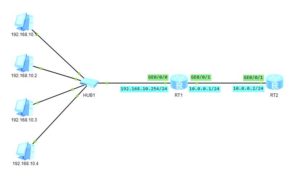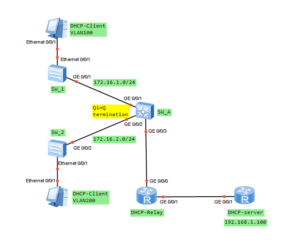A short video describing EASY-IP source NAT on Huawei’s USG firewall to assure that our intranet users can acccess the Internet.
The easy-ip is the easiest way to translate private IP addresses on your local area network when you have only one public IP address or the public IP address is assigned dynamically.
USG firewall configuration script:
#
dhcp enable
#
interface GigabitEthernet1/0/0
undo shutdown
ip address 10.0.0.1 255.255.255.0
service-manage ping permit
dhcp select interface
dhcp server excluded-ip-address 10.0.0.100
dhcp server static-bind ip-address 10.0.0.200 mac-address 5489-98b4-6a79
dhcp server dns-list 10.0.0.100
#
interface GigabitEthernet1/0/2
undo shutdown
ip address 5.0.0.2 255.255.255.252
#
firewall zone trust
set priority 85
add interface GigabitEthernet1/0/0
#
firewall zone untrust
set priority 5
add interface GigabitEthernet1/0/2
#
ip route-static 0.0.0.0 0.0.0.0 5.0.0.1
#
security-policy
rule name ALLOW
source-zone local
destination-zone trust
destination-zone untrust
action permit
rule name NAT_EASY
source-zone trust
destination-zone untrust
source-address 10.0.0.0 mask 255.255.255.0
action permit
#
nat-policy
rule name NAT_EASY
source-zone trust
destination-zone untrust
source-address 10.0.0.0 mask 255.255.255.0
action source-nat easy-ip
#
 Labnario Huawei From Scratch
Labnario Huawei From Scratch

